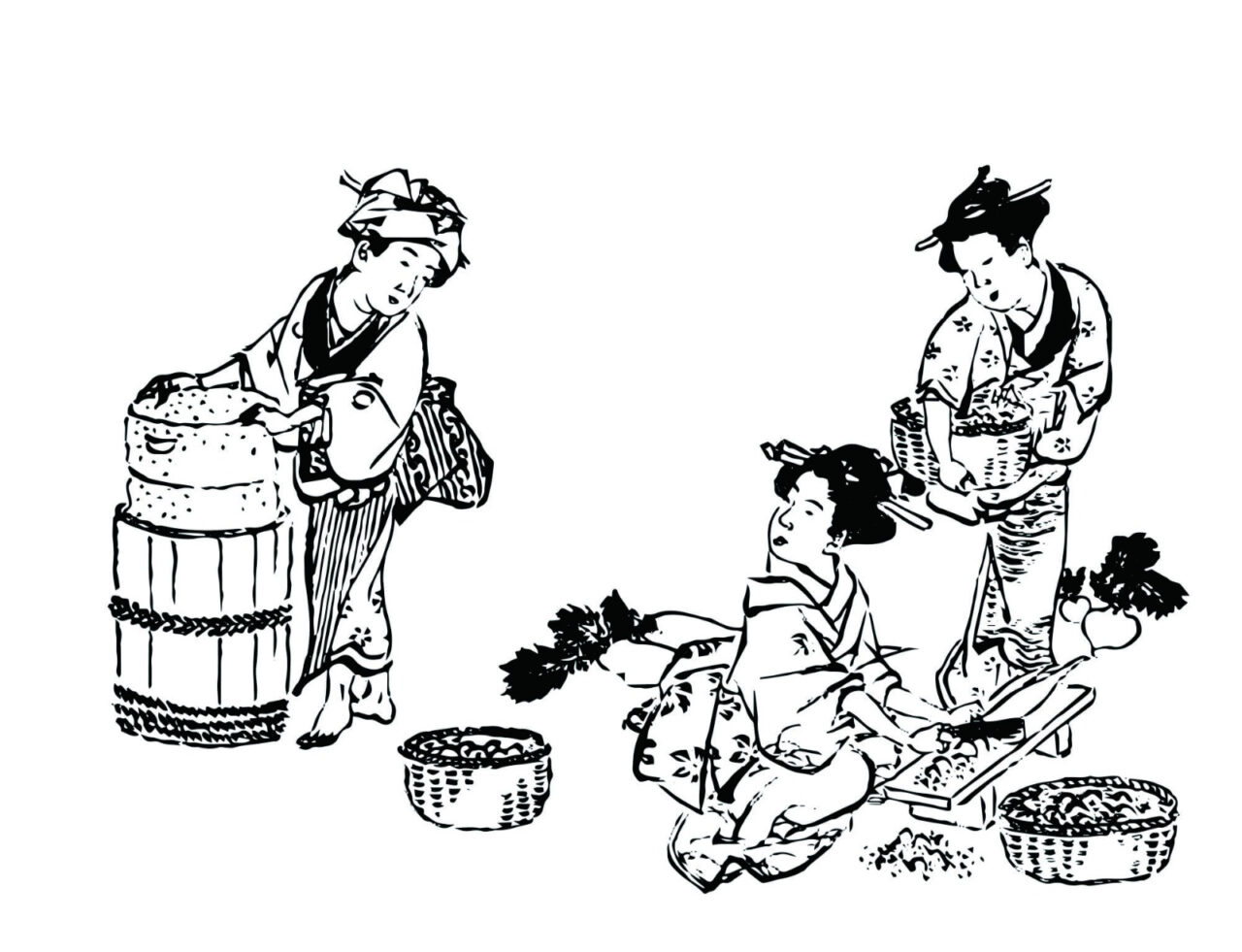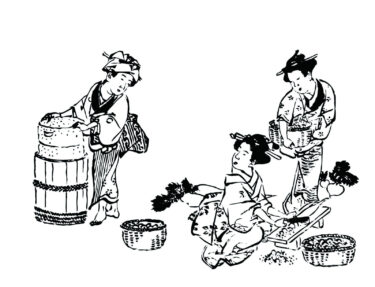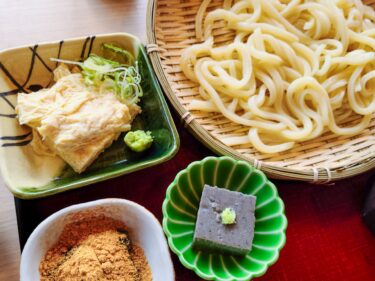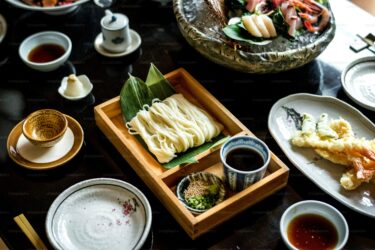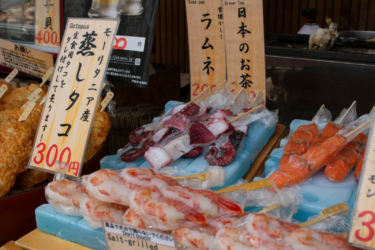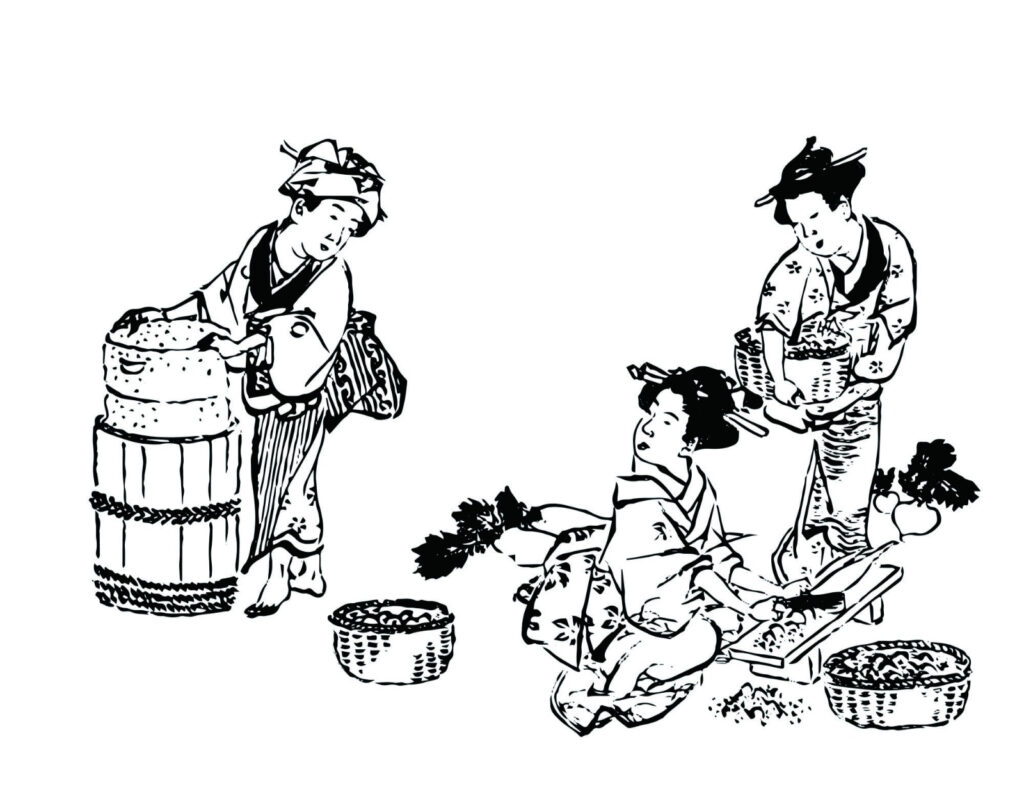
No discussion of Japanese fermented foods would be complete without mention of the power of lactic acid bacteria, a friendly microbe found throughout nature. When fermented they have the ability to convert sugars into lactic acid, with probiotic effects that are highly beneficial to human health. Cheese and yogurt are well-known examples of lacto-fermented foods, but in the traditional Japanese diet the main source of these microorganisms is fermented pickles. Here we introduce some of Kyoto’s most distinguished varieties. Welcome to a stinky, sour world of pickles that are anything but humble!
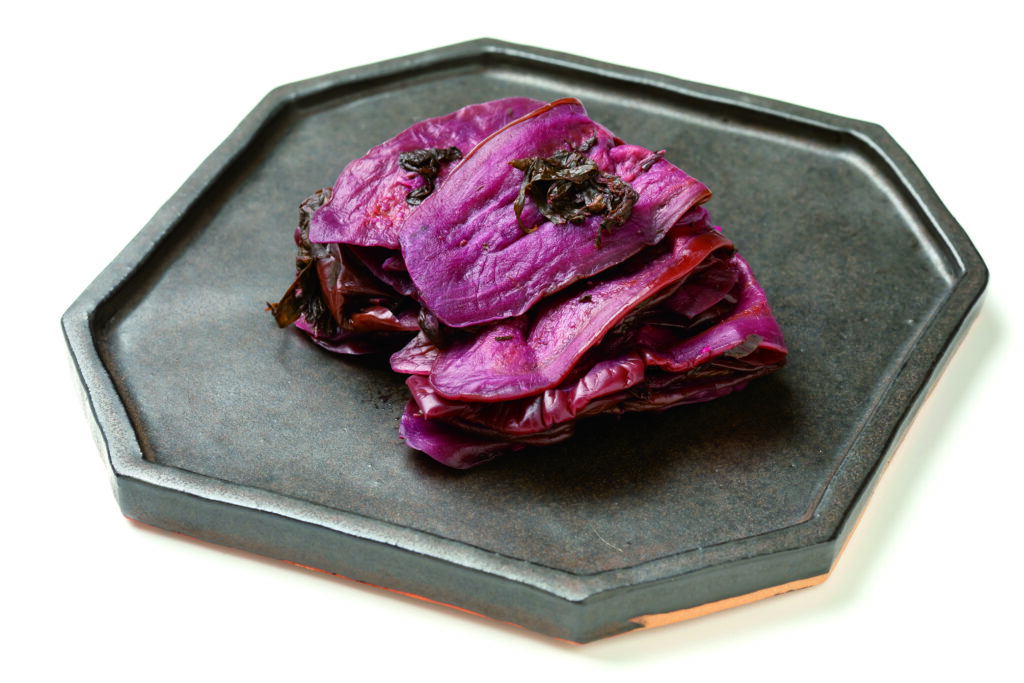
Shibazuke
A perennial favorite pickled with a Japanese herb
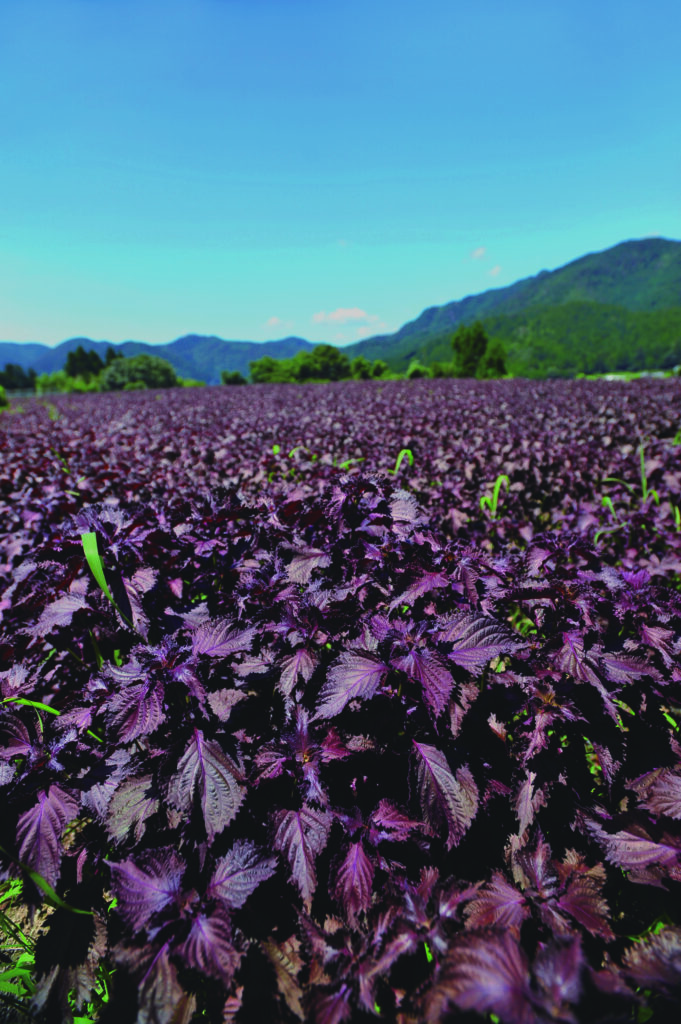
Shibazuke is a specialty of Ōhara, a village in the north-eastern mountains of Kyoto City. Folks here have been home-pickling shibazuke since the twelfth or thirteenth century to preserve summer vegetables such as eggplant and cucumber for the winter. The vegetables are pickled in salt with the region’s famous akashiso (red perilla) leaves that are harvested in early summer. The natural lactic acid bacteria in the vegetables speed up the fermentation process in the summer heat, giving shibazuke its distinctive tang. The vivid reddish-purple color is produced by a chemical reaction between the red akashiso and the purple eggplants. Most products on the market today claiming to be shibazuke are actually low-cost imitations made with colorants and liquid seasoning and are not actually fermented. For the real deal, try the nama (raw) shibazuke by Tsuji Shibazuke Honpo in Ōhara, which is made the old-fashioned way by pickling home-grown akashiso and eggplant in salt (and only salt!). It’s crunchy and tart with a bittersweet herbal note from the akashiso— rustic and honest, like good pickles should be. No wonder shibazuke has been a local favorite for 800 years.
How to eat shibazuke
・The traditional way—topped with grated ginger and a few drops of soy sauce. This mitigates the acidity and enhances the favor.
・Chopped up in tartar sauce.
・As a pizza topping for some delicious, nutritious punch.
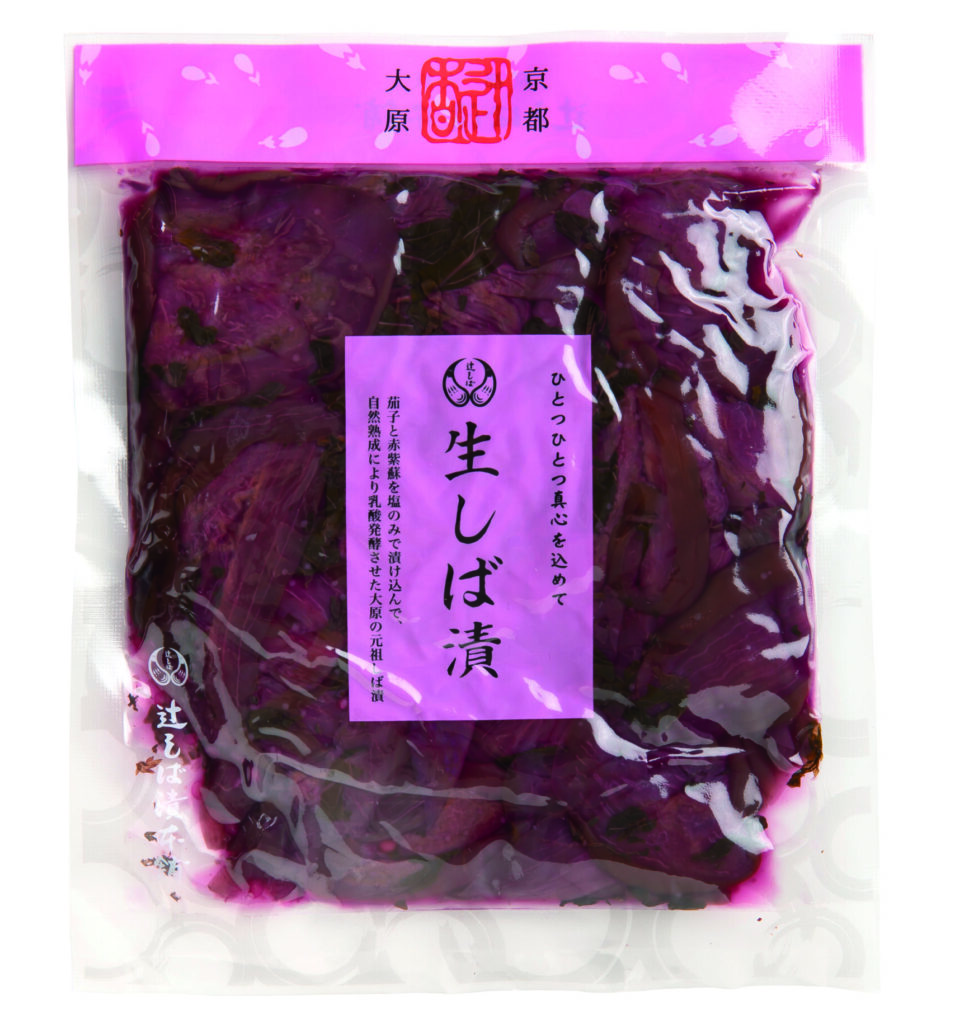
Tsuji Shibazuke Honpo
Address: 京都市左京区大原上野町483
Open: 8:30 am – 5 pm
Closed irregularly
www.tsujishiba.com
Sugukizuke
Super sour winter favorite
Suguki is an heirloom variety of turnip that has been grown in the Kamigamo area of Kyoto for some 400 years. It was previously a luxury food given as an offering to the Imperial Court. Today it remains a specialty vegetable with production strictly limited to the Kamigamo area. As the name suggests (it literally means ‘sour stalk’), suguki, when pickled with salt, has a unique sourness which develops through lacto-fermentation. Kyoto Narita is a sugukizuke specialty store that has been in business since 1804. The store harvests and pickles suguki in November and December and leaves them to ferment in a room heated to around 30 to 40 degrees Celsius. The first of the sugukizuke, although still light in flavor, will be ready to eat at New Year’s. The pickle becomes extra sour as it is left to age over the summer, and this mature version is what fans salivate over.
In 1993, sugukizuke was found to have a previously unknown species of lactic acid bacteria named Lactobacillus brevis. These highly vital bacteria reach the gut in a live state and are said to be good for digestive health and the immune system. The ancients who decided suguki was best eaten as pickles must be patting themselves on the back!

How to eat suguki
・The traditional way with rice.
・Chopped and mixed with olive oil as dressing for salad or
carpaccio.
・With pork— sauté together for a great favor pairing.
Pickled suguki are available whole for 432 yen per 100 g.
Chopped sugukizuke is sold in packs of 110 g for 518 yen
Kyoto Narita
Address: 京都市北区上賀茂山本町35
Open: 10 am – 6 pm
www.suguki-narita.com
Also at Kyoto Takashimaya (B1F) and JR Kyoto Isetan (B2F)
Heshiko
Japanese-style anchovies
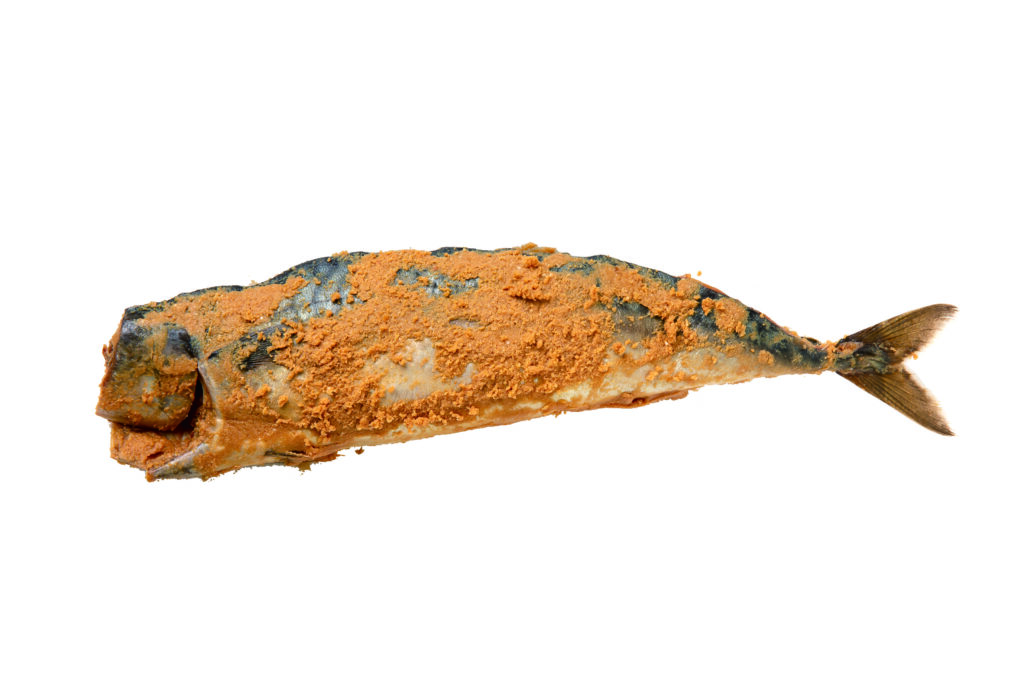
Japan being an island nation, fish is also an important part of its fermented food culture. In fact, sushi as we know it today originated from lacto-fermented fish. Called heshiko, pickled fish has been a popular preserved food on the western part of the Sea of Japan coast for centuries, and the Tango region in northern Kyoto Prefecture is one of the areas where it is made. The fish (typically mackerel or sardines) are pickled whole in a brown mixture of komenuka (rice bran) and salt. Lactic acid bacteria in the bran break down the fish protein, resulting in a strong umami flavor and pungent smell. Heshiko is also extremely salty so we recommend first-time eaters slice it very thinly and start with a small bite.
Most of the heshiko available in Kyoto comes from Fukui Prefecture, but you can get your hands on the local variety at the Tango food specialty store Chotto Tango. It’s also worth a visit there for the glimpse you’ll get into the differences in food culture between the inland and coastal regions of Kyoto from browsing the shelves.
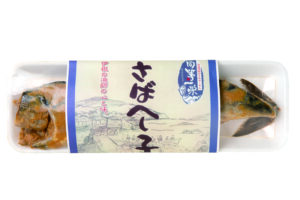
Mackerel heshiko 1,080 yen
How to eat heshiko
・ Brush off the excess rice bran and grill the fish lightly for a tasty accompaniment to saké. It’s also delicious eaten uncooked as sashimi.
・ As ochazuke—put heshiko and some chopped nori on top of a bowl of cooked rice and pour green tea
over.
・ Soak in olive oil and use it as you would anchovies

Chotto Tango
Address: 京都市上京区若宮横町110-1
Open: 10 am – 6 pm
Closed on Sunday and occasionally on other days
www.chotto-tango.com

